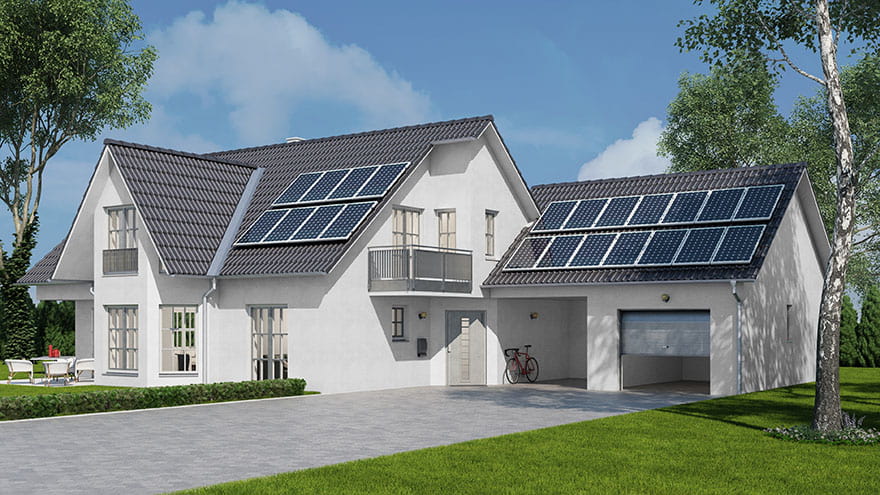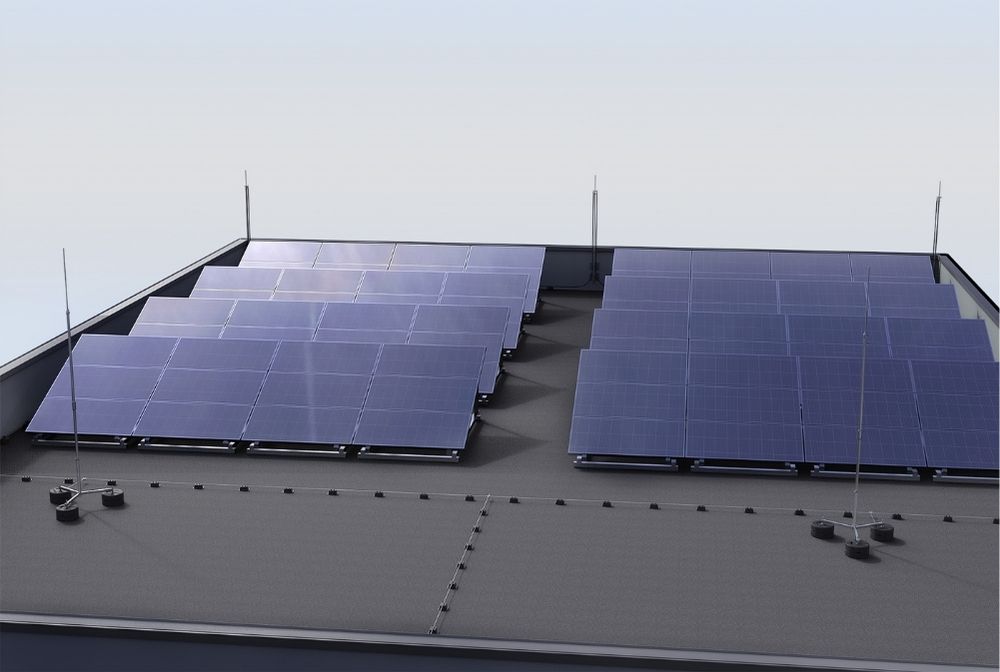In the following article we will focus on the issue of protecting photovoltaic installations against lightning strikes.

Check out the lightning protection systems from ELKO-BIS at the Onninen wholesaler
Renewable energy sources are becoming more common in Polish homes
We can increasingly observe the development of the renewable energy market. This is due to the growing popularity of photovoltaic panels as an alternative to fossil fuels in the production of electricity. It is estimated that the demand for energy worldwide will increase by 56% in 2040. Renewable energy sources are one way to deal with this problem. Technology based on RES is getting cheaper, which translates into its dynamic development. This is clearly visible in the number of new PV installations on industrial buildings and households. This results from the understanding that energy obtained from the sun means not only cheaper electricity bills, but also a contribution to the development of renewable energy infrastructure at the local level.
Threats related to the popularity of renewable energy
A photovoltaic installation is a fairly simple system in terms of its operating principle. The panels absorb solar rays emitted by the Sun and convert them into electrical energy. A photovoltaic installation, most often seen on the sloping roofs of single-family houses, is installed even a dozen or so meters above the ground near the top of the building or other elements such as chimneys or air conditioners. The large surface area of the panels significantly increases the risk of lightning strikes, which can lead to expensive property damage. In such a case, it is recommended to install systems that protect the photovoltaic installation from the effects of discharges and surges.
How to ensure the safety of the photovoltaic installation and the entire house?
To sleep soundly and be sure that our installation will be completely safe, it is necessary to perform installations that will comprehensively protect our investment, i.e.: external lightning protection installation, internal surge protection installation and potential equalization.
 Risk assessment is key to deciding whether or not external lightning protection is needed. The costs of installing the system are incomparably lower than the losses associated with a direct lightning strike to our system. A lightning strike can result in a fire or even serious damage to the building structure.
Risk assessment is key to deciding whether or not external lightning protection is needed. The costs of installing the system are incomparably lower than the losses associated with a direct lightning strike to our system. A lightning strike can result in a fire or even serious damage to the building structure.
When designing or installing an external lightning protection device, we should pay special attention to protecting devices located on protected roofs both from the effects of a lightning discharge and from a flashover of the charge from the lightning protection system to the protected device. The multi-sheet standards PN-EN 62305 clearly indicate that: " All roof devices made of insulating or conductive material, which contain electrical equipment and/or equipment used for information processing, should be located in the protective space of the air terminal system ."
A very important aspect when designing a lightning protection system is the appropriate protection zone and insulation distance. Photovoltaic panels, due to their external location, are particularly vulnerable to direct lightning discharge. A properly executed design allows avoiding the risk of sparkovers, which pose a threat to the PV installation. In accordance with the applicable protection principles, two basic principles are adopted when determining the location of vertical air terminals:
- The arrangement of the masts is considered appropriate as long as the protected object is located entirely within the protection zone.
- Lightning protection masts and the horizontal and vertical air terminal system are spaced from the protected devices to create a minimum insulation distance (s).

Surge protection for lightning protection systems
 Proper design and implementation of external lightning protection installation, while maintaining a safe insulation distance, protects PV systems against direct atmospheric discharge and the effects of lightning current flowing through these devices. The effects of discharges causing damage or destruction of electrical devices can be felt within a radius of up to 2 km from the lightning discharge location due to the action of so-called lightning electromagnetic pulses, causing an increase in voltage in the electrical installation of the building.
Proper design and implementation of external lightning protection installation, while maintaining a safe insulation distance, protects PV systems against direct atmospheric discharge and the effects of lightning current flowing through these devices. The effects of discharges causing damage or destruction of electrical devices can be felt within a radius of up to 2 km from the lightning discharge location due to the action of so-called lightning electromagnetic pulses, causing an increase in voltage in the electrical installation of the building.
This effect is technically referred to as a “surge”. Photovoltaic panels produce direct current, which is converted into alternating current with network parameters by an inverter. This device with complex electronics is sensitive to all effects of lightning electromagnetic pulses. Having knowledge about lightning current, the external lightning protection system of PV panels should be supplemented with dedicated surge arresters in accordance with the zone protection concept contained in the PN-EN 62305-4 standard. Such coordinated lightning protection allows for full protection of photovoltaic panels and the internal installation against all effects of lightning discharges.
Equalization of potentials
The last element that creates a comprehensive lightning protection system is the potential equalization installation. The external lightning protection installation protects us from direct lightning current discharges, but does not equalize the potentials between individual installations and conductive elements in the facility. To eliminate this dangerous phenomenon, we use the potential equalization installation. Thanks to it, we minimize the risk of electric shock to people, fire, damage to installations and devices.
Insurance
![]() A properly executed lightning protection system is considered by insurers to be a basic condition for the payment of compensation as a result of material damage caused by extreme weather events. It is wrong to think that basic insurance of our property will allow us to obtain the declared amount of compensation.
A properly executed lightning protection system is considered by insurers to be a basic condition for the payment of compensation as a result of material damage caused by extreme weather events. It is wrong to think that basic insurance of our property will allow us to obtain the declared amount of compensation.
According to the Polish Insurance Association (PIU), the condition for insuring a facility equipped with a photovoltaic installation is the execution of a lightning protection system in accordance with the lightning protection standard PN-EN 62305. We encourage you to carefully analyze the contracts and comply with their provisions. Failure to comply with the terms of the contract with the insurer will result in the lack of compensation payment despite the occurrence of damage covered by the insurance.
Summary
In the face of the ongoing energy transformation and high electricity prices, a photovoltaic installation is an excellent choice for large photovoltaic farms, installations on industrial buildings, but also for households. Ensuring the protection of life and property through safe lightning protection of a photovoltaic installation is the most beneficial investment, and many years of reliable operation mean significant savings for the budget on any scale.
Check out the lightning protection systems from ELKO-BIS at the Onninen wholesaler